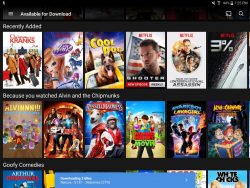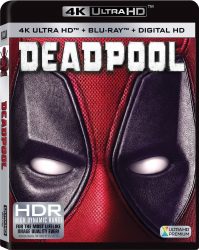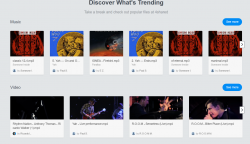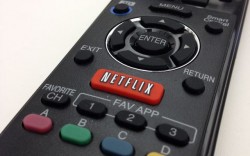Hope the new year is treating you well so far? The start of the year is usually a bit quiet, and then boom, CES hits and there is this tech news explosion. This doesn’t necessarily translate to news that we cover here on the site, because there’s only so many stories you can do on company X’s new Ultra HD Blu-ray players, or company Y’s new super thin TV (if X != Y, then X in this case is Sony and Y is LG – more on this later).
Before we get to the CES stuff, there’s a bit of copyright news to go through as per usual.
![]()
You don’t hear much about three-strikes much these days. Some countries have had it for years, and thousands upon thousands of warnings have been sent out, yet the creative industry has been particularly quiet about the positive effects it has had on piracy and more importantly, their bottom line. The reason they are quiet on the positives may be because there are none!
According to a new study, three-strikes and other types of warning regimes does not seem to have had any positive effect on box office revenue. Earlier studies and reports seems to suggest that piracy rates do drop on the pirating platforms that are monitored as part of these regimes, but it appears this drop in piracy is not translating into increased profits. In fact, when Megaupload was shuttered, the box office take actually dropped in a few key regions.
Either people are still pirating and they’re just not being caught because they’re using VPNs or an alternative, un-monitored downloading source, or maybe piracy simply doesn’t translate to lost profits that, once piracy is removed from the equation, magically re-materialise.
And all the while during the scare campaign about piracy, the movie industry has been doing much better than it has ever been. Funnily enough, even the so called piracy stricken music industry appears to be recovering (even though it’s decline may have had nothing to do with piracy, and its revival has nothing to do with anti-piracy).
Take the UK for example, where the music, movie and video game industries all recorded profit growth over the last year, much of the change, both the good and bad, has more to do with the digital transition than piracy. The fact that the digital transition started at around the same time as the surge in piracy (and think for a moment and you’ll see that both of these things are actually related) may have confused these industries as to the root cause of their woes. Their obsession with destroying piracy may have also cost them valuable time and resources that could have otherwise been used to innovate and adapt to the digital transition. Instead, tech industries frustrated with being blamed for the piracy problem developed their own innovative solutions that gave consumers the legal digital platforms they sorely wanted. This changed the distribution landscape dramatically, and shifted revenue away from the traditional industries and towards the few tech companies that had the vision to fulfill a consumer need. This is why the music industry isn’t profiting as much from say streaming as they should right now, and why they now have much less of say in how their product is distributed.
The movie industry suffered less because the digital transition occurred at a slower pace than with music, possibly due to the fact that movie files are bigger and Internet speeds just weren’t good enough back then. This allowed the industry more time to adapt, and they’ve been able to negotiated better deals with the likes of Netflix and others (as well as to launch their own platforms, such as Hulu). The gaming industry’s digital transition is further delayed, again possibly due to the file size issue, and they are perhaps even better equipped to deal with the transition.
I would like to think lessons have been learnt, but the way the music industry is still going on about Spotify, I fear it hasn’t.
![]()
So CES was dominated by 4K stuff once again, and now with Ultra HD Blu-ray being the format of choice for 4K (the digital transition appears to have gone backwards here, and again file size is the main issue), there are related products all over the place. Surprising is the fact that Sony and LG have only now announced their first Ultra HD Blu-ray players, despite Samsung, and even Microsoft, having had a player out for ages.
As always trying to shoot itself in the foot, the consumer electronics industry’s latest gamble is that consumers won’t mind a pseudo format war in term of HDR. With HDR10 and Dolby Vision already confusing things for consumers, they may have to contend with Hybrid Log Gamma and Technicolor HDR, both of which are being pushed by LG (but are open formats, so anyone is a free to adopt them). I used the term pseudo because it’s unlikely that a full blown format way will develop, mainly because CE manufacturers will simply adopt support for all of these formats (just like LG has already done) and the content distributors can pick whatever format they want to use.
Not great news for early adopters with equipment that can’t be upgraded via firmware though, but isn’t that always the case?
Just more more thing on the CES before I sign off, it’s interesting to see so many new products that now fall into the category of “consumer electronics”. It used to be just TVs and tape/disc players, and now we have cars, hairbrushes and basically anything you can stick Wi-Fi into. The tech industry is expanding into other traditionally non tech industries, just like how it has made inroads into movies and music – these other industries should heed the experiences of the music industry especially, if they don’t want to be left behind.
======
Looks like that’s it for the week. Hope you have a good one, and see you next week!















